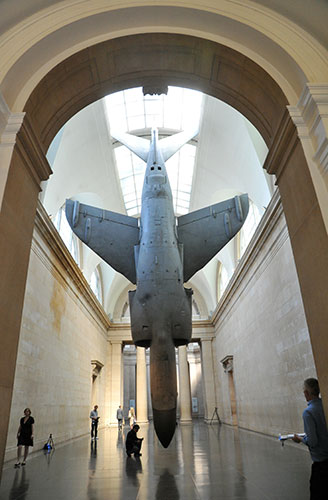BY: Flight International

BAE
Systems’ Mantis unmanned air vehicle technology demonstrator has been shipped back to the UK, after completing a
successful first
flight-test campaign in Australia.
Returned to BAE’s Warton site in Lancashire in mid-June, the Mantis is in rebuild ahead of undergoing further ground-based system development work at the site. However, the company has yet to decide whether its current demonstrator will be flown again.
“Mantis was about demonstrating an end-to-end capability,” says Dave Kershaw, business development and strategy director for Autonomous Systems & Future Capability, part of BAE’s Military Air Systems unit. “The test flights went to show that it could go to the endurance planned.”
The twin turboprop-powered aircraft made an undisclosed number of flights from the Woomera test range in South Australia, including five described as “mission-representative”. Kershaw says these included tasks such as automatically tracking a ground
area for targets, and cross-cueing the aircraft’s two on-board payloads: an L-3 Wescam MX-20 electro-optical/infrared camera and BAE’s imagery collection and exploitation system.
One night flight was also made, and BAE also assessed the time needed to
prepare the UAV to take off again after completing a sortie. This demonstrated a 30min performance. The 19.8m (65ft) wingspan Mantis made its first flight from Woomera in November 2009.
BAE says a production version of Mantis would be able to fly at altitudes up to 50,000ft and
deliver an endurance of over 36h. The design is a potential
candidate for the UK Ministry of Defence’s Scavenger requirement, which seeks a persistent intelligence, surveillance, target acquisition and reconnaissance capability to
enter use from around 2015 to 2018.
The MoD is expected to downselect its preferred option for Scavenger in 2012, with possible
alternatives including the X-UAS development of
EADS Defence & Security’s Talarion UAV, which is already being offered to France,
Germany, Spain and Turkey. However, the UK is also looking at whether its requirements could be met under a potential collaboration with the French defence ministry, Kershaw says.
Meanwhile, BAE will roll out its Taranis unmanned combat air vehicle demonstrator (
artist’s impression pictured below) during an event to be staged at its Warton facility on 12 July.














 An RAF Jaguar that saw service during Desert Storm is displayed belly up on the floor of the gallery
An RAF Jaguar that saw service during Desert Storm is displayed belly up on the floor of the gallery Sea Harrier
Sea Harrier






